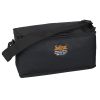Solinst Model 102M P4 Probe Mini Water Level Meter
Features
- Accurate, precise laser markings
- Narrow 4mm x 38mm probe weighing 0.35 oz (10g)
- Ideal for accessing narrow diameters
- Free ground shipping
- Expedited repair and warranty service
- Lifetime technical support
- More
Overview
The Solinst Model 102M P4 Probe Mini Water Level Meter is designed to measure groundwater levels in small diameter tubes and piezometers. A choice of two small diameter probe designs are attached to a narrow coaxial cable. The cable has a heavy-duty polyethylene jacket and stainless steel coaxial conductors for durability and strength. Permanent markings are precisely laser etched on the cable every 1/100 ft. or each millimeter.
Mechanics
A standard 9 volt battery, housed in an easy-access battery drawer, powers the Water Level Meter. When the probe enters water, a light and clearly audible buzzer are activated. The water level is then determined by taking a reading directly from the cable at the top of the well casing or borehole. A sensitivity control allows the buzzer to be turned off while in cascading water and ensures a clear signal in both high and low conductivity conditions.
- (1) Model 102M P4 Probe Mini Water Level Meter
In The News
Source Water Monitoring in Albany, New York: Tracing Water Quality throughout Tributaries
Thousands of US cities pull their drinking water from natural source waters like reservoirs, rivers, and streams, making overall watershed health a key consideration for water providers. In Albany, New York, the Albany Department of Water and Water Supply delivers drinking water to over 100,000 residents as well as monitors and manages the larger drinking water supply watershed. Hannah Doherty, Environmental Specialist at the Albany Department of Water and Water Supply , spends her days working with a small team to monitor the drinking supply and the connected water bodies. Doherty explains, “We’re the first to encounter the water that ends up being the drinking water.
Read MoreWildfire Prevention in the Sierra Nevada Region with the Yuba Watershed Institute
Though recent wildfires have sparked new conversations about wildfire management and response, groups like the Yuba Watershed Institute have been monitoring the forests and water resources of the Sierra Nevada region for decades, managing approximately 5,000 acres of land with the Bureau of Land Management (BLM) and about 7,000 acres in private land partnerships. The goal of the Institute is to work with local communities and land agencies to improve watershed and forestry management through informed practices and public outreach. The goals of the Yuba Watershed Institute are three-fold: Improve the ability of fire suppression agencies like the California Department of Forestry and Fire Protection ( CAL FIRE ) and the US Forest Service.
Read MoreWave Sensors Integration with NexSens Buoys: A Cutting-Edge Solution for Wave Measurment
Real-time wave data supports accurate weather prediction, safe and efficient maritime operations, and provides valuable safety and operating condition information for recreation and commercial fishing. Understanding wave dynamics also helps with the design of protective coastal structures like seawalls, breakwaters, and jetties. It also supports better prediction of their impact on sediment transport and coastal geomorphology. Wave data is a key factor in qualifying and designing offshore wind farms and harnessing kinetic energy for electrical generation. It helps with the understanding of ocean-atmosphere interactions and contributes to studies of sea-level rise and climate change impacts.
Read More









